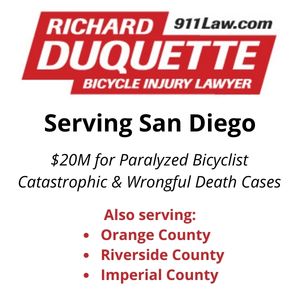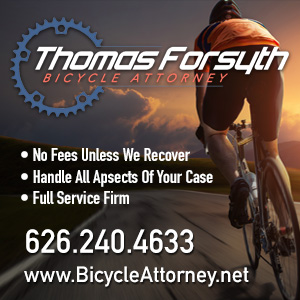
This is who we share the roads with.
According to the founders of a Northern Kentucky Facebook group, throwing quarters and lit cigarettes at bicyclists, directing homophobic slurs at bike riders, and saying “exterminate these assholes” is just good, clean American fun.
One of the group’s administrators — a candidate for the local school board, had this to say.
“I see both sides but people need to realize we are just fucking around,” he wrote in a comment on a post in the group. “I hope no one from this group would ever intentionally hurt someone.”
Despite comments like this from others in the group.
“It’s going to look real bad when one of us accidentally run over one of these bicyclist lol,” reads one post a group member wrote Sunday. That post seems to have since been deleted.
” ‘Accidentally’ lol” another member comments.
“What body?” Heim replied.
“You need an alibi I got you,” a fourth group member wrote.
A post by another group administrator, David Andriot, shows a car plowing into a group of cyclists, with several flying into the air.
“I’ll get even with those cyclist (sic) one way or another…” Andriot wrote above the photo.
Evidently I don’t have a very good sense of humor.
Because harassing and assaulting other people — let alone threatening their lives — because you don’t like their chosen means of transportation doesn’t seem very funny to me.
But what the hell do I know?
………
I want to be like him when I grow up.
A 95-year old Iowa man still rides 10 miles a day using an adult tricycle, even though he can barely walk.
More proof that just about anyone can bike. And that bike lanes benefit the elderly and disabled, despite what bike lane opponents and traffic safety deniers insist.
………
Local
Is anyone really surprised that Los Angeles is the most dangerous city in the US for pedestrians, with more than twice as many fatalities as the next highest city?
Streetsblog’s Joe Linton says the positives about the $20 million, ten-year MyFigueroa Complete Streets project are undermined by scofflaw drivers.
Curbed writes about nine cities throughout the US with smart ideas to improve transportation — including LA’s commitment to electric buses and Santa Monica’s Scooter City USA.
KABC-7 offers advice on how to deal with neck and back pain caused by riding, while Red Bull gives tips on how to stay comfortable on endurance rides.
State
The last fatal mountain lion attack in California came 14 years ago, when a mountain biker fixing a broken chain was killed in Orange County’s Whiting Ranch Wilderness Park. Note: Thanks to Mike Wilkinson and J. Patrick Lynch for pointing out that I originally wrote “mountain bike attack,” rather than “mountain lion.” It should be noted that mountain bikes seldom attack. And when they do, it’s usually their owners.
San Diego approved plans for dense housing and commercial projects around the city’s sports arena, including 30 acres of parks, bike lanes and a bay-to-bay trail.
A writer from the University of California says the problem isn’t the scooters on our streets, it’s the streets themselves.
Curbed’s Alissa Walker says representatives of more than 400 cities around the world attending the recent climate summit in San Francisco were obsessed with electric cars, rather than biking and walking, which have the potential to reduce greenhouse gas emissions faster.
National
An architecture and design site questions whether e-scooters are bad for the environment.
After a series of bicycling fatalities in Chicago, the city council opened the floor to bike riders to vent their anger. And more importantly, actually listened to them. Unlike a certain SoCal city we could name.
Life is cheap in Ohio, where a driver will serve 16 days home confinement, followed by a whopping 14 days behind bars after pleading guilty to vehicular homicide in the death of a bike rider.
Indiana second graders learn the meaning of a ghost bike near their school, and decide that everyone should know about it.
A bikeshare rider goes for a ride, partly against traffic, in a Boston highway tunnel.
A planned expansion of Arlington National Cemetery could be good news for local bike riders.
A Florida woman woman rides 50 miles a day after surviving a stroke five years ago, riding primarily through black communities so they can see an African American woman on a bike; she’s planning to ride 2,200 miles across the US to Burbank.
International
Keep riding your bike. Greenhouse gas emissions have started to decline in 27 cities around the world — including car-choked Los Angeles.
Five cities around the world that made their streets safer through urban design. Any guesses on whether LA is one of them? Anyone?
Cycling Weekly tells you what to look for in energy gels. How about one that comes with a wet wipe to clean your hands afterwards?
The Guardian asks what a truly walkable city would look like. And looks at life in the Spanish city of Pontevedra, where cars are banned from the central city. We could only dream. Thanks to Stephen Katz for the heads-up.
Vancouver’s aggressively auto-centric mayoral candidate, who’s running on a platform attacking lawless bike riders and pedestrians, while promising to rip out the city’s bike lanes, failed to show up for a court hearing on a distracted driving ticket; she claims the officer mistook her makeup compact for a cellphone. Sure, let’s go with that.
Monday was a rough day for Toronto bike riders, with three injured, and a 72-year old man killed, in just a single four-hour period. Thanks again to Stephen Katz.
Fifty London streets will be closed to motor vehicle traffic on Saturday for World Car Free Day.
A new survey shows Glasgow bicyclists and drivers hold a dim view of one another.
The Jerusalem Post celebrates Yom Kippur, the holiest day on the Jewish calendar, by relating the history of bicycling in Israel and Palestine.
The next round of Trump’s tariffs going into effect next week will include Chinese-made bicycles, frames and components, potentially making your next bike or parts 25% more expensive; bike safety equipment like helmets and lights were removed from the list.
Competitive Cycling
Bicycling profiles Mike Wood, the Canadian cyclist who made the WorldTour just three years after he started racing. And made cycling fans cry by revealing he dedicated his stage win in the Vuelta to his stillborn son.
2016 Paris-Roubaix champion Mathew Hayman will retire after 20 years in the pro peloton.
Finally…
Now you can go electric on gravel. When you’re carrying meth on your bike, don’t ride salmon without lights and run red lights — or flee from the police.
And if you’re going to spend ten years riding your bike around the world, don’t wait until you’re already 60 miles away to tell your wife.
………
I’ve been blown away by the generosity of BikinginLA readers this week. So let me thank Kevin G and Alan C for their generous donations to help support this site.
If everyone who visits BikinginLA today donated just $10, it would be more than enough to keep to keep this site going for a full year.
And G’mar Tov to all our Jewish friends; may your fast be easy.
………
Join the Militant Angeleno and BikinginLA for the first-ever Militant Angeleno’s Epic CicLAvia Tour at the Celebrate LA! LA Phil 100 CicLAvia on September 30th!
Just RSVP to MilitantAngeleno@gmail.com. We want to guarantee a relatively small group to make sure we can keep the group together, and everyone can hear.




 Also tomorrow, BikeSGV and Metro BEST are holding the
Also tomorrow, BikeSGV and Metro BEST are holding the  Beverly Hills is hosting the formal dedication and ribbon cutting for the reconstructed Santa Monica Blvd at 1:30 pm this Monday, including the new green bike lanes. Maybe it’s also time to formally retire their designation as the former Biking Black Hole of Beverly Hills.
Beverly Hills is hosting the formal dedication and ribbon cutting for the reconstructed Santa Monica Blvd at 1:30 pm this Monday, including the new green bike lanes. Maybe it’s also time to formally retire their designation as the former Biking Black Hole of Beverly Hills.
 He also notes that on just the second day of his ride, a total stranger insisted on giving him $20 to buy lunch.
He also notes that on just the second day of his ride, a total stranger insisted on giving him $20 to buy lunch.














